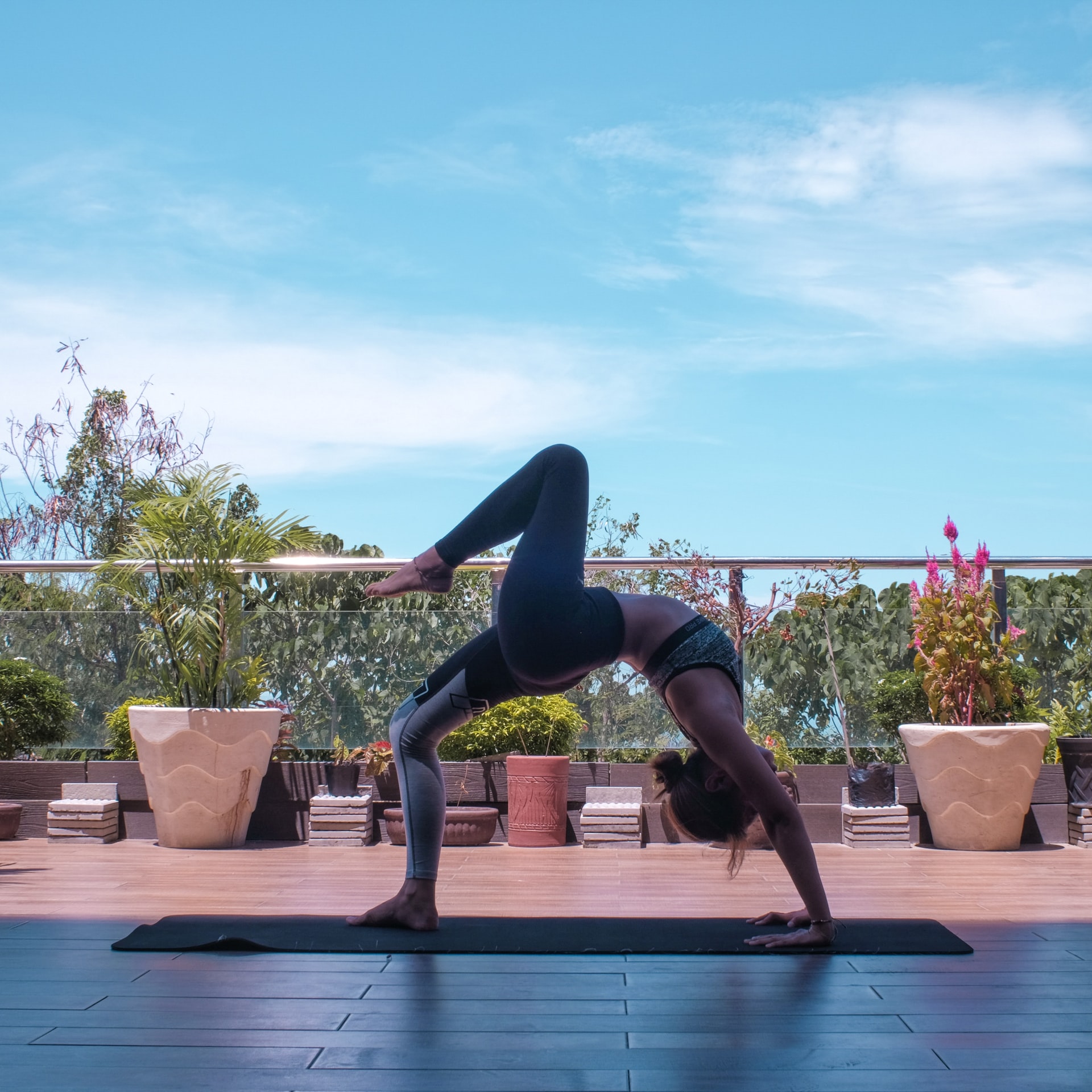
“Yoga is not about touching your toes but about what you learn on the way down.” ~ Jigar Gor
~
A few years ago, I attended a self-development course.
The course took place once a month, spread over seven weekends. At the start of every weekend, we would all give an update on how we were and what had happened since the last training.
It struck me how many people would apologetically say that they hadn’t had the time to look at the course material and hadn’t done anything with what we had learned so far. I didn’t understand why they thought that reading the script was necessary to implement our new knowledge. I also hadn’t opened my course binder, but a lot of what we had been taught had become part of my daily interactions and thought processes.
What can I say? Being judgmental comes easily to me. At the end of the day, I suppose it primarily showed that we have quite rigid ideas of what learning and studying look like.
Being judgmental, of course, doesn’t save me from overlooking my own blind spots. And it took me a couple of years after that experience to notice that I did the same compartmentalizing with my yoga practice.
I started yoga in my 20s and have been practising ever since, to varying degrees—anything from once a month to several times a week. But the way I thought about my yoga practice was limited to what I was doing on the mat and at the studio.
Then one day, during a yoga session, I realized that yoga had indeed become part of my everyday life without me being aware of it. And I understood that the moment I became conscious of it, I could integrate it in even more areas of my life.
Yoga is much more than the asanas.
Once I started paying attention, I recognized the following nine yoga elements that play a role in my life off the mat too:
1. Namaste
Every yoga class finishes with the Namaste greeting (which, of course, isn’t only used in yoga!). It translates to, “The divine in me bows to the divine in you.”
So, there are three elements to this: Acknowledging that I carry divinity within me. Acknowledging that you carry divinity within you. And thirdly, for me to greet you with respect. Outwardly, it might only be a gesture, but inwardly it’s a whole mindset. This tends to be much easier to practise with those we love. With others, especially those who annoy us, it’s far more difficult.
I am far from mastering it, but even the reminder to show respect to everyone and to look for and focus on the divinity, rather than on what drives us up the wall, can make a huge difference. Moreover, we tend to be much better at finding fault with ourselves. So less obvious maybe is also the shift in our mindset when we start believing in the divine within ourselves. How does that feel?
2. Listen to your body
Yoga can be taxing, and our bodies aren’t always able to get deep into a pose or hold it for very long. A good yoga teacher offers variations that suit every level of student. Rather than forcing ourselves into certain positions and risking an injury, we are instructed to listen to our bodies and be gentle.
It’s about striking a balance—not to give up too easily but equally not to push ourselves too far. In German, we have a saying: “to walk on one’s gums.” This is the equivalent of being on one’s last leg. Too often we do not listen to our bodies and their warning signs. Many illnesses are our body’s last resort to hold up the stop sign. Yoga helps me to check in with myself regularly, and I’ve gotten better at trying to decipher what it wants me to know.
3. Breathing practise
Breathing is integral to yoga. Well, it’s integral to life, right? But most of the time, we are not conscious of our breathing. As breathing techniques are a part of yoga, it directs us to pay attention. To pay attention to how we breathe, as well as using our breath to work through the more difficult asanas. The beauty is, of course, that we need nothing to incorporate conscious and steady breathing into our everyday life.
My awareness of my breath has made a huge difference. I realized that I tend to hold my breath when I am stressed. Not for minutes on end, of course, but even seconds make a difference. Again and again, I can easily see how calm breathing combined with relaxing my shoulders, are tiny and manageable adjustments that have a significant impact on my well-being, especially in stressful situations.
4. Release tension
Whether at the start of a yoga lesson or during an asana, the teacher regularly reminds me to let go of any tension I hold in my body and to relax my muscles. And even though I know it’s coming, it gets me every time; places I don’t even think about are tensed up and I am always able to relax my jaw a little bit more. This is another work in progress, but I am getting better at checking in with myself.
When I am stressed or nervous or anxious, I now tend to consciously relax my shoulders—and they are always tense in those moments. And yes, I often need to do it again and again. And again. But that’s okay. As with anything, it’s a matter of progress, not perfection. Besides, even just asking ourselves the question about where in our body we hold tension makes a difference and shifts our attention.
5. Managing (our) expectations and acceptance
No day is the same. My body and mind simply aren’t consistent from day-to-day. Many different internal and external factors play into this. Just with my mood, I have ups and downs with regard to what my body is able to do.
Some days, I can hold asanas for any length of time, and other days, it is much more uncomfortable, painful—or plain impossible. Yet, when it comes to our life in general, we often have unrealistic expectations of what we should be able to deliver.
Often times, I’ve bemoaned the fact that my productivity or skills varied. My logic was that if I was able to do it once, I should be able to replicate it every time—right? When, in reality, our capabilities vary. We all know what a difference a good night’s sleep makes, for example. Why do we then expect our bodies and mind to power on regardless?
6. Enduring pain isn’t a virtue
One of my deep-seated beliefs is that only when I have to work really hard for something is it worth something. And consequently, everything that comes easily isn’t worth much or anything. Well, yoga has been teaching me that this is not the case.
For one, what we perceive as difficult varies from day-to-day. And secondly, we can sometimes do more damage than good if we keep pushing too hard. Let’s check in with ourselves: what are our reasons to push ourselves? Are we connecting our self-worth to the outcome? Are we expecting appreciation for doing the really hard things< And what cost are we prepared to pay for it? While there is a lot to be said about leaving our comfort zone, there are also limits to the benefits, which don’t increase in proportion to how far ahead we push.
7. Comparison is the thief of joy
And still, we engage in comparison for almost everything in our lives. Of course, we live in a society where comparison starts basically the minute we are born. Thus, for most of us, it is something we need to make a conscious effort not to do.
Let’s keep it real: I absolutely compare my yoga practice to others. Glancing around to see how far I can bend, how long I can hold the pose compared to the rest of the class. Fortunately, though my teacher keeps reminding me not to compare. As with everything in life, we will always find somebody better, as well as worse than us for whatever we are doing. What we can work on is putting our hearts into doing what we do and giving it our best shot. As the saying goes, Be you, because everyone else is already taken!
8. Savasana
Is this also your favourite part of the yoga class? Savasana is the corpse pose at the end of a session. Again, there are several layers to this. Firstly, this is a total relaxation pose—which quite frankly is much easier said than done. Just like in real life, right?
While self-care has become a buzzword, the majority of us are still struggling to incorporate this into our daily lives, rather than simply making it an after-thought once things have gone wrong.
Moreover, when are you fully relaxed? Are you able to switch off your mind’s chatter? Like many of us experience in meditation, relaxing can actually be hard. The benefits of relaxation are manifold and range from increased energy, productivity levels, a reduction in anxiety, and improved concentration.
Secondly, according to the tradition of yoga, it is called a corpse pose because it is meant to simulate death and make us ponder our own death. Our actual death as well as the death of our ego, our attachment to things, and acceptance of what is. I can only speak for myself, but that is a reminder I can use many times throughout my day.
9. Honouring and feeling gratitude for my body
The first time I heard my teacher say this at the end of a class, it was quite the eye-opener, “Let’s honour and thank our body for what it does for us.” For what it does for us in yoga practise as well as the rest of the time.
I’ve been guilty of focusing instead on my perceived weaknesses, my lack of strength and flexibility in getting into and holding a yoga pose, and it’s often left me frustrated. This holds true not only for yoga but many other things in life. I am a huge fan and believer of a daily gratitude practice and this is my reminder to include gratitude for myself, which doesn’t generally feature on my list. So much we take for granted and only realize when it’s gone. What if you ended your day spending time on what you are grateful for and specifically give thanks for everything your body has done for you?
Of course, you don’t need yoga to learn any of the above lessons. The overall lesson really is, that everything we do can teach us something outside the specific realm of that thing we are doing. As always, mindfulness is a wonderful tool that helps raise our awareness and supports us in becoming more purposeful in what we do. What we learn at work helps us in our personal lives and vice versa. Rather than compartmentalize the different areas of our life, we benefit from seeing it all as one. One life.
I am a huge fan of personal development, but it’s more than the book we read or the course we take. It is about putting what we learn into practice just as we can put our yoga knowledge into practice on as well as off the matt.
Namaste.
~








Read 5 comments and reply